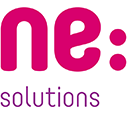You’re heading to the “office” to start your working day. For some it’s a short walk into another part of their home / living space for others it’s a mobile arrangement. For a significant proportion of the working population however, it means leaving the home and travelling to the place where you will spend a good proportion of your day. It could be argued that this last group of people are, by the very fact they are going to work have little say in how their working environments are laid out. However – we would argue that few people have a truly agile business environment – let me explain.
The Corporate Environment:
I’ve worked for large conglomerates and small enterprises – I’ve had my own office and I’ve been in hot desking situations too often to count. For me it’s not the actual environment – the walls, desks and spaces that make the business agile or not – it is the way the place is managed.
One of the best and worst kinds of environment to my mind is the open plan rabbit warrens – you know the kind I mean, you have (if you’re lucky) 3 partitioning walls, but if something happens you can guarantee heads popping up like bunnies out of holes. You also have to be really good at tuning out the noise of ongoing conversations, phones ringing and people wandering past your space, or wandering to your space to chat.
Did I get anything done – sure! Was it agile? Probably – as it was constantly in flux. Was it the best environment to work in – some were, some weren’t, but that had a lot to do with the way it was managed as well as the people who were located in the same area. If it works for you – then great, if it doesn’t – what can you do to make your own area as agile as possible?
The Mobile Environment:
If the liveried vehicles on the road are anything to go by there are a lot of people working in the mobile environment. But the trades people and delivery drivers are not the only people who spend time on the road of course. Every time we go to a meeting, event, expo or client site we are also working in a mobile environment.
At NE Solutions we have a number of people who work remotely. Our Lifestyle Change Coordinators and Senior Move Managers along with our team of drivers and offsiders who assist with the packing and moving of our clients need to be confident that what they are seeing online and in some cases in the paper environment is correct. That comes down to every member of the team keeping their bit of the job process up to date.
Home Office Environment:
For solopreneurs who are not on the road, tend to base their “office” environment at home. There are significant advantages of doing that.
- Tax breaks for home offices
- No commute time
- Low overheads
But there are some problems with working from home
- Noise – if you’ve ever worked from home you will understand the noise levels from family members, neighbours (there are pre-school kids living next door to me who like to “play” outside), tradesmen, cars hooning round the corners (or is that just my place). And then there are certain times of day that are a lot noisier than others – school times, bin collection times, people heading to and from work – can all make for a very noisy, unproductive working environment. So what can you do – apart from change locations?
- Cabin Fever – Living and working in the same space can lead to people feeling isolated. While there will be interruptions (and sometimes blessed ones) of phone calls and client meetings, the lack of interaction may be detrimental to your business health, let alone your own.
Shared Office Environment:
For people who don’t want to work from home any longer, or don’t want to work from home at all – there are many shared office spaces you can take advantage of.
But do your due diligence before signing up – will the cost of renting space mean you will be that amount of money (and a bit more) more efficient – or are you willing to offset the cost of being with other people against the cost of the office space?
So what do all of these environments have in common? In terms of being agile it is partly the way the space is managed, but more importantly it is the technology that allows people to track their business no matter where they happen to be that allows businesses to become agile.
Oh and for those of you think you recognise the title of this piece, it is one of the best (IMO) books to read when you are starting a brand new venture… maybe an agile one
“You have brains in your head
You have feet in your shoes
You can steer yourself
any direction you choose.
You’re on your own. And you know what you know.
And YOU are the guy who’ll decide where to go”
If you haven’t read it recently you can find the content here – http://denuccio.net/ohplaces.html (note: the background is very pink).
